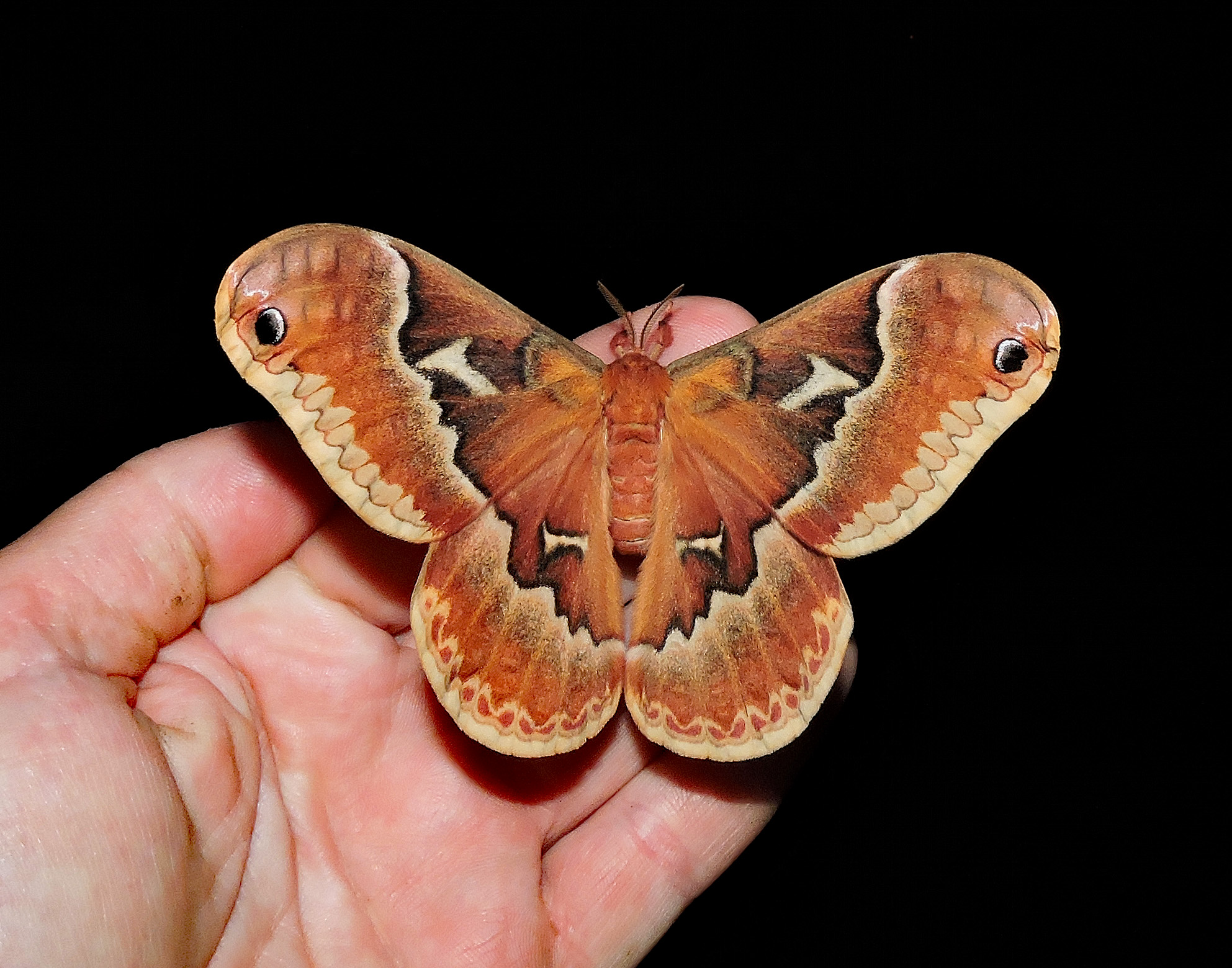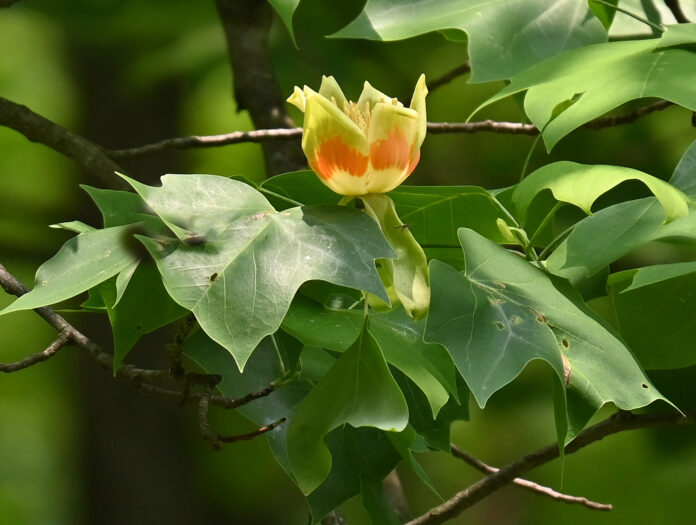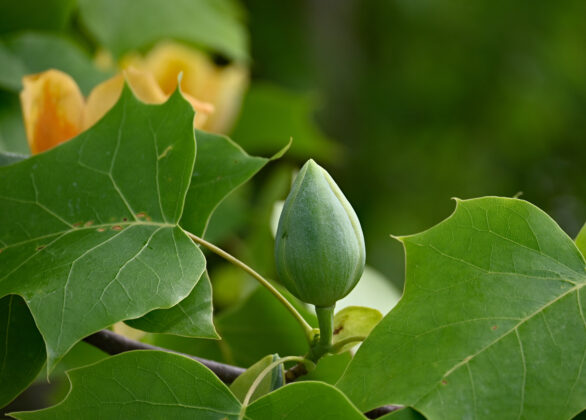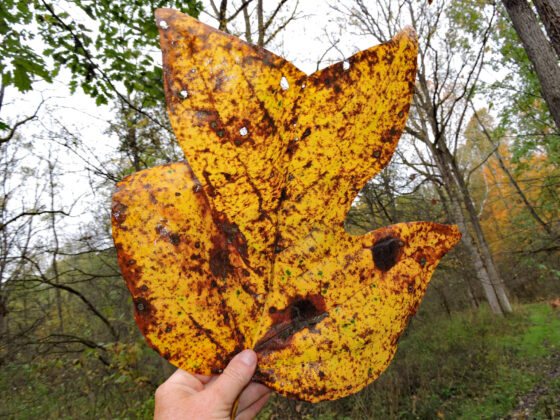As the spring forest morphs to green and the expanding leaves in the canopy slowly shade out the wildflower spectacle on the forest floor, I always feel a tinge of sadness. Spring is by far my favorite season, but it always seems like the shortest. Nevertheless, Mother Nature always has something up her sleeve to help divert my attention. Shifting my gaze upward in late spring, I can’t help but enjoy the breathtaking display of one of our most beloved native trees – the tulip tree (Liriodendron tulipifera).
Found throughout the entire eastern U.S., the tulip tree is named for its tulip-like flowers and leaves. The tree displays the largest solitary flower of any native tree here in Ohio. A member of the magnolia family, the tulip tree’s fragrant flowers are easy on the senses. At 4 inches wide and 2 inches high, each blossom consists of six petals, green on the outside, highlighted by orange and yellow hues within.
They are a smorgasbord for many pollinators, including hummingbirds, butterflies, moths, beetles and numerous species of bees. The large flower buds open over a period of time, the blossoms enveloping the tree with beauty for several weeks, albeit mostly in the highest branches.
Once pollination has taken place, the petals loosen their hold and fall to the ground, revealing a developing fruit, known as a samaras. This cone-like structure is made up of numerous winged seeds which are dispersed by the wind when they mature in autumn. These are eagerly consumed by squirrels, birds, mammals and other wildlife species.
An impressive sight
The foliage of the tulip tree is impressive on its own. Vibrant green and shiny, the large, smooth leaves are uniquely shaped with four lobes, often reach a whopping 8 inches in length. Their petioles, or stems, are long and flattened, causing them to flutter vigorously in the breeze, much like the leaves on a poplar tree. For this reason, and with no relation to the species whatsoever, the tree is often referred to as tulip poplar or even yellow poplar, due to the leaves’ golden colors in autumn.
When leading nature hikes through the forest during my tenure as a naturalist, I often stopped to point out a giant tulip tree alongside the trail that had been struck by lightning. This was highlighted by an impressively long gash that split through the bark from high above all the way to the ground. Is it any wonder? Tulip trees grow taller than any other tree in the eastern forests. Attaining heights greater than 100 feet, they easily stick up above all others, making them easy targets during thunderstorms.
Uses

They are also one of the fastest-growing trees, adding 2 to 3 feet to their height per year. Giant tulip trees, when left alone to mature, display amazingly straight trunks up to 4 feet in diameter.
Their mature bark sports deep fissures, interlaced with flat ridges, creating a unique pattern. Because of these impressive characteristics, the tulip tree is highly valued for its wood and holds much commercial value in lumber production. It is soft, fine-grained, versatile and easy to work with, often used for cabinetry, furniture, musical instruments and construction. Because it was so easy to carve, Native American tribes used huge tulip trees for their dugout canoes, earning the trees the name, canoewood.
Tulip trees have so much to offer. They add an almost ornamental presence to the landscape with their distinct pyramidal shape. Their fragrant blossoms and thick foliage combine to create their very own ecosystem, providing many vital resources for wildlife habitat. Tulip trees are the host plant for the larvae of the tiger swallowtail butterfly and the tulip tree silk moth. Both species lay their eggs on the leaves which provide the resulting caterpillars with the nourishment they need to metamorphose into the stunning adults. Ruby-throated hummingbirds have come to rely upon the flowers for nourishment during their spring migration north. Many species of birds build their nests in the branches. To call the tree a wildlife magnet is surely an understatement. When autumn arrives, the tulip tree concludes with a vivid display as its leaves turn brilliant shades of gold. Yes, tulip trees are indeed a treasure!


















Here in North Carolina we call them Poplar Blooms on Poplar tree.